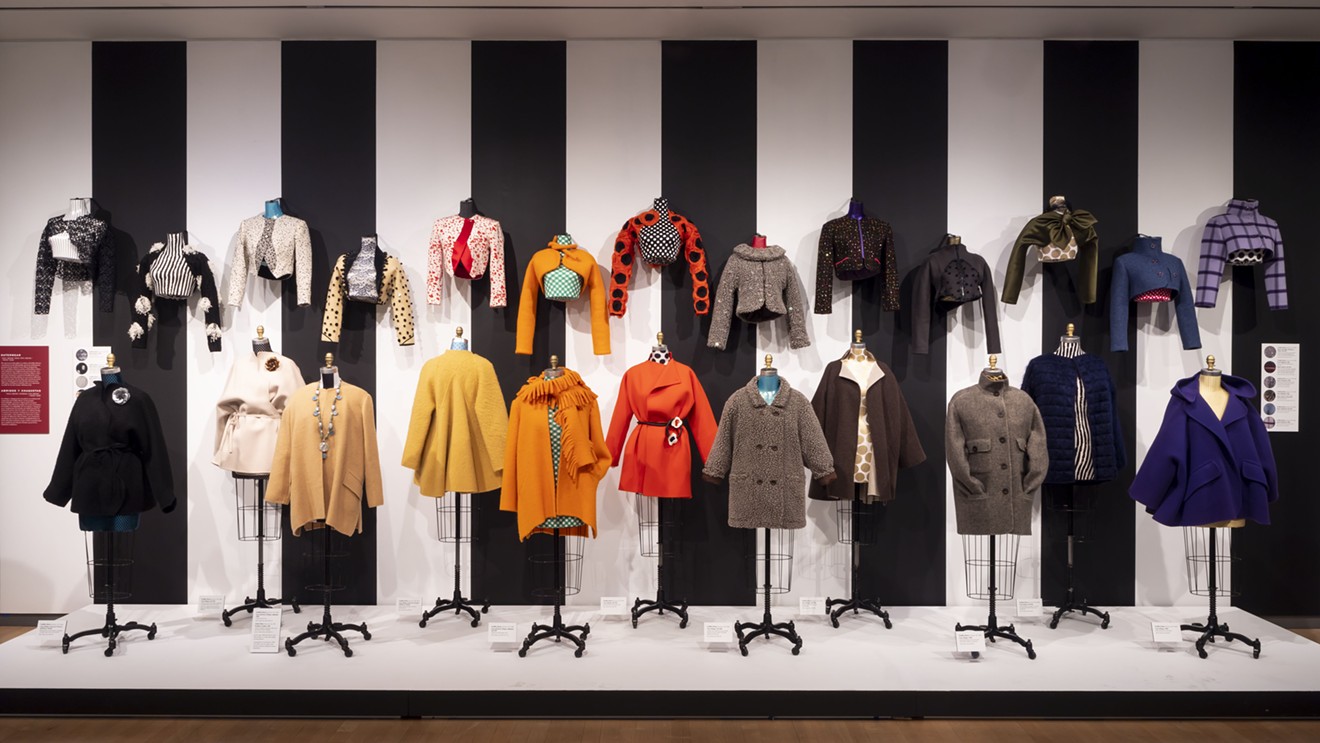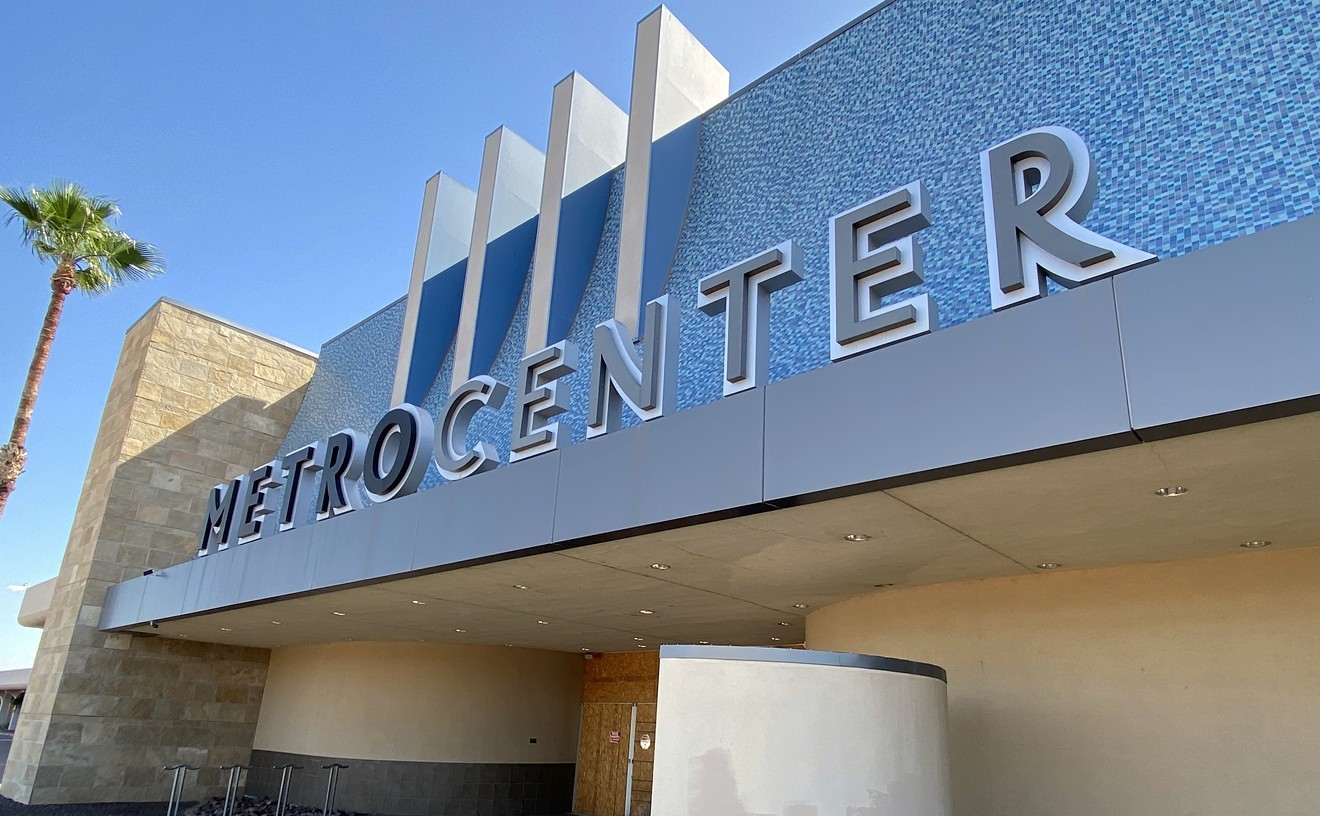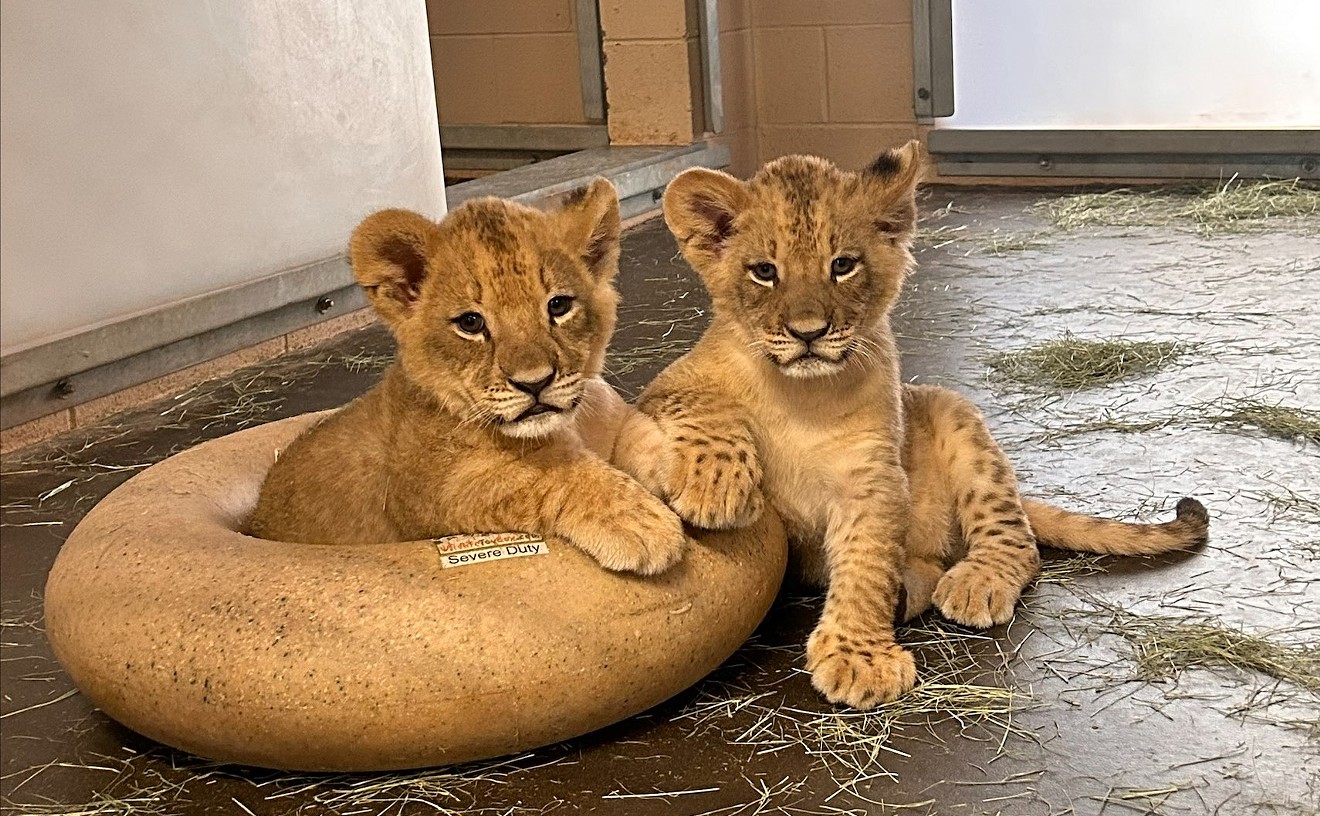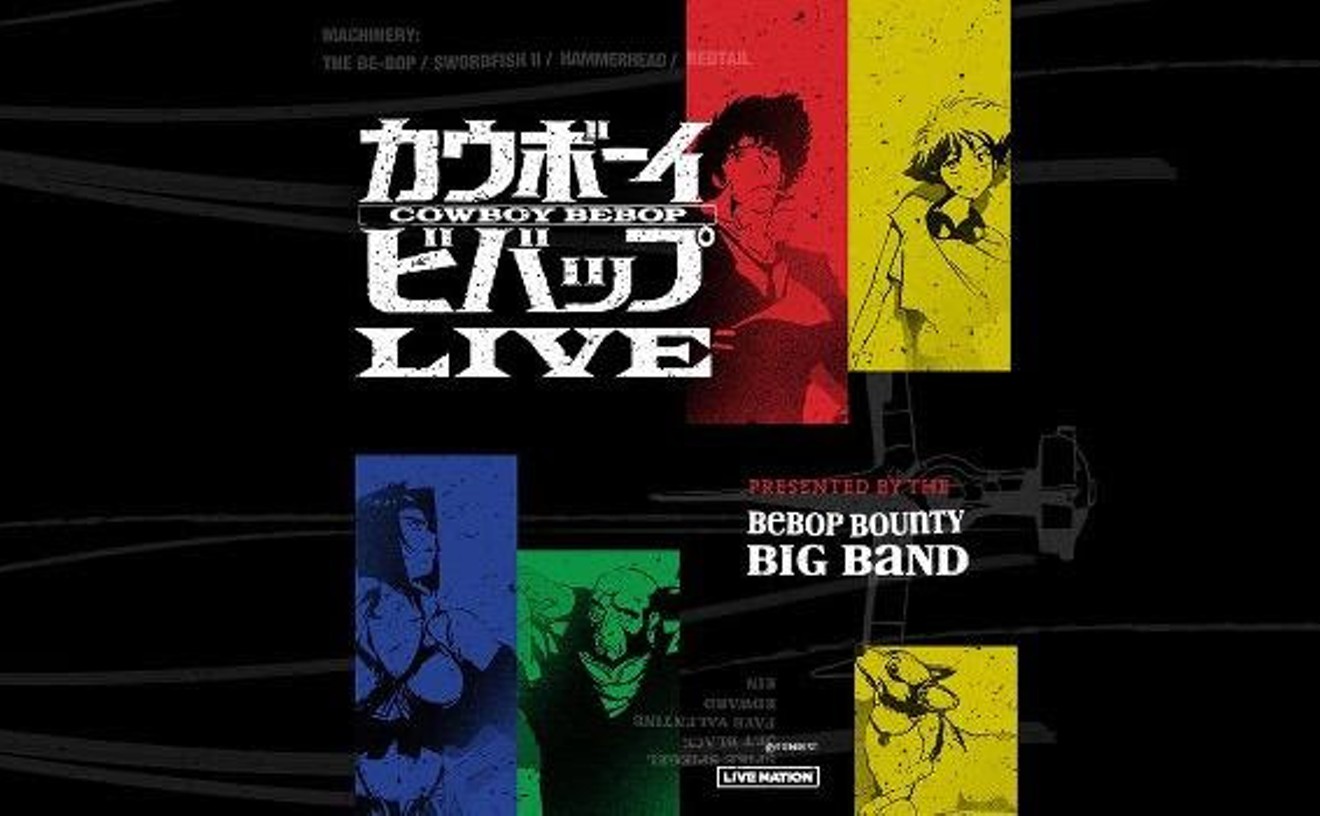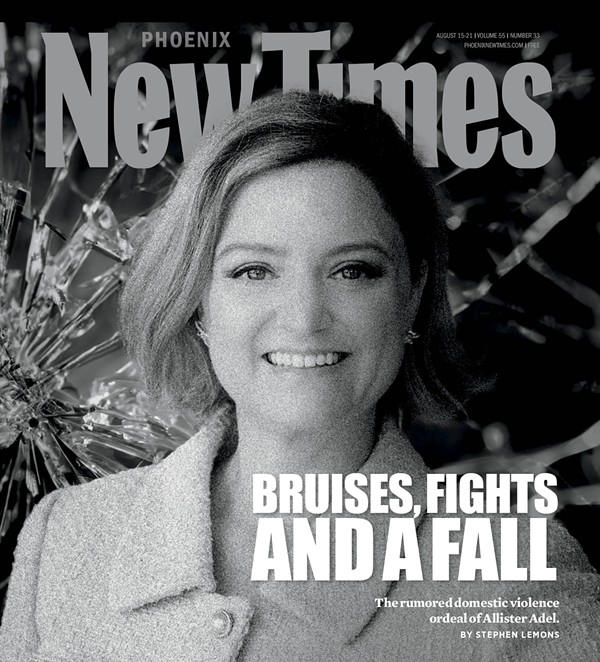Growing up in the Midwest, Helen Jean knew of Geoffrey Beene as the name on the designer-licensed shirts and neckties her father purchased at the mall.
It was only after she began her education in fashion that she came to see and understand the creativity and artistry of the revered American designer.
In her role as the Jacquie Dorrance Curator for Fashion Design at Phoenix Art Museum, she is the public face of the institution’s current exhibition “MOVE: The Modern Cut of Geoffrey Beene,” which is on display through July 23.
The show can be seen in three rooms on the second floor of the museum. In the large Harnett Gallery, mannequins posed as ballerinas dance in breathtaking evening gowns, watched by dress forms bearing sporty jumpsuits, chic officewear, and a gaggle of cheerful, polka-dotted garments. In the next gallery, a collection of inventive evening gowns faces a rainbow of coats and bolero jackets. In the final room, objects on loan from Authentic Brands Group share space with one very special dress, a sequin-and-ostrich-feather minidress from the 1960s that was one of the first pieces in Phoenix Art Museum’s fashion collection.
Most of the items in “MOVE” come from the wardrobe of New York City philanthropist and publisher Patsy Tarr, a longtime client of Beene’s before his death in 2004.
As Jean explains, Ellen Katz, a major donor and supporter of the museum, who hails from New York, convinced her friend Tarr to donate the bulk of her Beene garments to Phoenix Art Museum in 2019. (Tarr had already loaned the museum a number of items for a 2009 exhibition titled “Geoffrey Beene: Trapeze.”)
“We’re very, very fortunate that she chose our museum,” Jean says. “Of course, it was very intentional on her part, sharing this story and these objects and this opportunity to study this designer’s work. And more than just the designer — it’s the tailors that he worked with and the seamstresses that he worked with and the photographers and the dancers and all of these other people that were involved in these years of production. So there’s a wealth of stories that can be told from this and she saw the opportunity to share that in a much larger way by gifting it to an institution outside New York City, outside of the East Coast.”
Visitors to the museum will undoubtedly enjoy feasting their eyes on the exquisite items in the exhibition, but Jean gave us some special insight and helpful hints on getting the most out of “MOVE: The Modern Cut of Geoffrey Beene.”
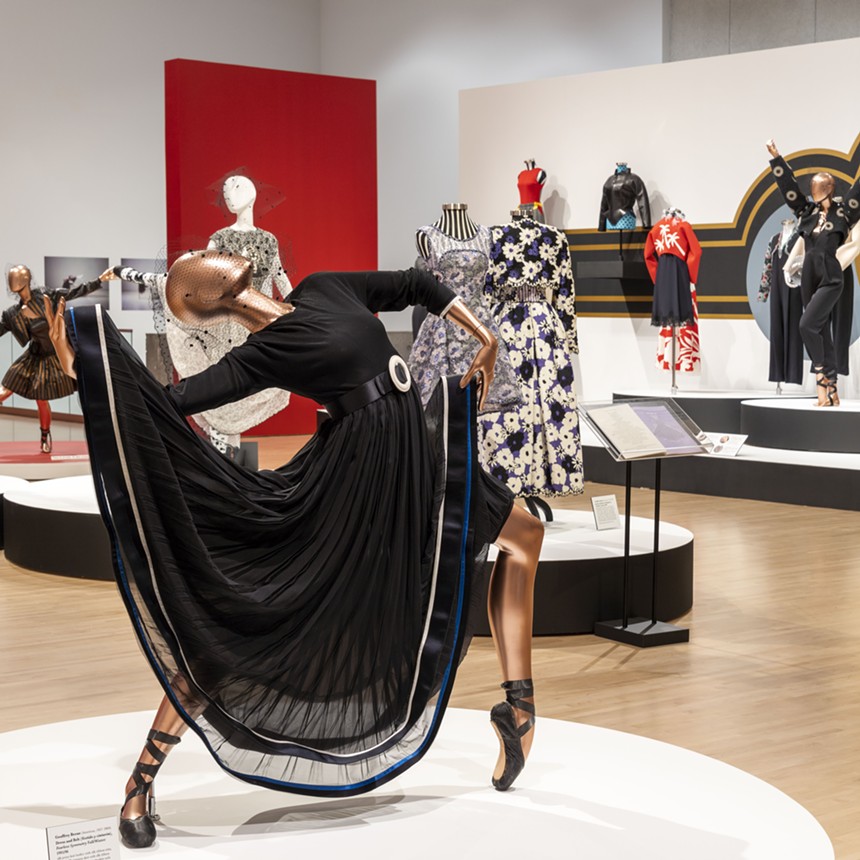
Installation view of "MOVE: The Modern Cut of Geoffrey Beene," 2023, Phoenix Art Museum.
Airi Katsuta/Phoenix Art Museum
Understanding the collector-designer relationship
Although Tarr purchased and wore many Beene designs over the years, Jean says that calling her a muse isn’t really the right word.
“She wouldn’t call herself a muse,” Jean says. “And she even was very respectful in saying, ‘I can’t even call him a friend. I admired him greatly. We were friendly, but we weren’t close and didn’t share intimacies in the way a deep friendship does.’ They did spend lots of time together as a client and a designer and shared a lot of life stories and bonded in those ways. So they bonded over the clothing. She was a client. … The client is what is at the end of this entire process and that is the entire point, for this vision that he has that’s manifested into these beautiful garments arrives in the hands and is worn on the bodies of these women. That is the endgame.”
What drew Tarr and so many other women to Beene’s work?
“Lots of things. Comfort. It was so easy to put on. She felt so confident in it. It didn’t require tons of underpinnings and fussiness,” Jean explains. “And what she’d say over and over again was, 'You can just throw it on and put on whatever shoes you wanted and just go out the door.' And you can just be comfortable and you had what you needed. And it had pockets. And it always looked great. … And the comfort is over and over and over again the underlying statement that you get from these women, these clients. And it is something that is unique to Mr. Beene and also unique to American fashion is that level of comfort and that level of practicality.”
Which isn’t to say that a Geoffrey Beene evening gown isn’t a work of art, a meticulously conceived and crafted garment that cost thousands of dollars even in the 1980s and 1990s, the era during which most of Tarr’s items were made.
But, Jean says, “That alignment that is very rare, to have that level of quality on that type of fabric deliver those performance features and the comfort.”
Why the show is called ‘MOVE’
When the museum received Tarr’s collection in 2019, Jean began to research the clothes. Through that, she learned of his “runway ballets” of the 1990s, which were fashion shows that merged design with ballet.
“Upon researching Patsy’s collection, and the bulk of it is in the 1990s, I then learned about this moment when Mr. Beene was producing a different format of fashion show. He was collaborating with choreographers and ballerinas along with models to create ballet runways, fully realized with choreography on a proscenium stage, lighting, a soundtrack, everything,” Jean says.
Choosing items that illustrated that era of Beene’s work was “my first round of selection,” Jean says. “And then through those, what stories could I tell? I saw we wanted to tell a story about movement because it’s about ballet, but within that, I could tell movement through his harness structure that he liked to employ through belts, through vests, through bibs, through the way he place the seam lines on the garments.” She points also to Beene’s sportswear and his graphic patterns as design features that exemplify the theme of movement.
How best to appreciate the exhibition
If all a visitor takes away from “MOVE” is that the clothes are beautiful, so be it. But Jean suggests taking photos of the clothes and their accompanying labels, as well as the explanatory panels, to contemplate later.
“[Guests] can just photograph those quickly as they walk by and read them later, because they’ll make sense. They can photograph the gallery with their flash off, because it’s always great to revisit these things. But while they’re in the gallery, certainly look at the garments — keep your hands in your pockets, I always want to remind everyone."
Besides the clothes, there are video interviews with choreographer Doug Varone, who helped create the runway ballets, as well associates of Beene’s, including dancers, fit models, fashion historians and more.
“They give a wonderful story to the creativity and the artistry of Mr. Beene. And they were there. They were there in the room during the fittings, they were there when he was coming up with these designs, they were there when he was making the tough decisions. So they are able to provide a wonderful insight into that experience,” Jean says.
It takes a team to make an exhibition
Although Jean is the curator of Phoenix Art Museum’s fashion collections, she is quick to point out that an exhibition like “MOVE” doesn’t happen without many contributions behind the scenes.
The Arizona Costume Institute is the membership-based group within Phoenix Art Museum that has been supporting its fashion design collection since 1966. ACI purchased several items for “MOVE,” including a dress from one of Beene’s final collections and an illustration of the designer by renowned fashion illustrator Joe Eula.
Besides the financial and philosophical support from ACI, no exhibition comes together without a group of people.
“I’m lucky to work with an incredible team of people that I present these ideas to," Jean says. "So this is not my idea from beginning to end, solely and exclusively. This is my inspiration, it’s my job to find the inspiration within these garments and the thread between them within our collection. But then I present the idea to a team that can help design the environment, that helps to thread that story that poses challenging questions that cause me to revisit the research, to find new research, to ask harder questions, to consider things differently.”
And although she is a fashion professional, the public also plays a role in Jean’s understanding of the garments.
“I get to overhear people in the gallery,” she says. “They don’t know who I am, and I get to hear them associate with a piece and identify with it. It reminds them of someone or it reminds them of a moment or it reminds them of a dress. … Maybe I didn’t see at first why, beyond its technical skill and its ability to address elements of design and art, how people connect with it emotionally, because I may not have connected with it emotionally, but I understood it checked so many important other boxes.
“So those are important lessons for me, to always look at every single piece from a variety of opinions.”
“MOVE: The Modern Cut of Geoffrey Beene” continues through July 23 at Phoenix Art Museum, 1625 North Central Ave. The exhibition is included with general admission, which is $24 for adults, with discounts for seniors, students and children. Museum hours are 10 a.m. to 9 p.m. on Wednesday (Pay-What-You-Wish hours are 3 to 9 p.m. on Wednesday), and 10 a.m. to 5 p.m. Thursday to Sunday. Call 602-257-1880 or visit the Phoenix Art Museum website.

